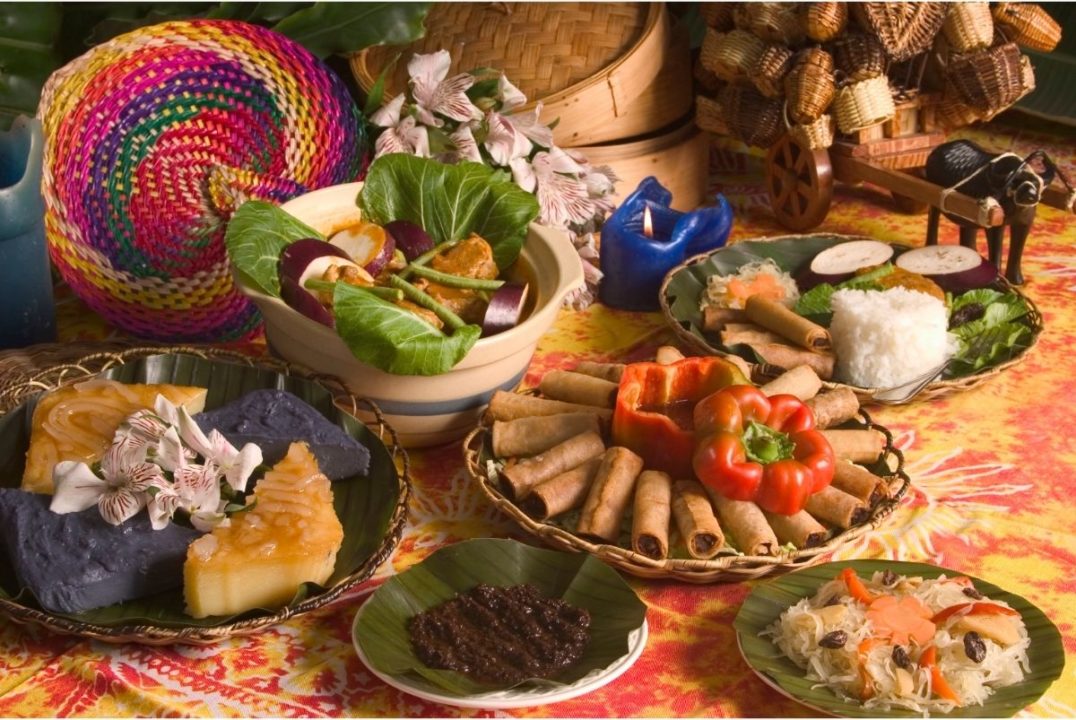Defining Filipino food is an ordeal, even for seasoned Filipino chefs. Centuries of Spanish colonization and trading from neighboring countries brought multiple influences – add to that, the regional flavor profiles of our 7,000-plus islands, and you’ll end up with a cuisine that’s hard to pin down.
Is Filipino food the deep-fried Americanized goodness of Jollibee fried chicken? Or could pochero, a Spanish-influenced tomato-sauce-infused bean stew, be the best representation? In a word association game where “Filipino food” is the cue, a lot would blurt out pancit, a stir-fried Chinese-inspired noodle dish.
It can be confusing, but that’s the beauty of Filipino cuisine. With a knack for combining different flavours, Filipino food is deliciously eclectic, with bold flavours derived from traditional cooking techniques. If you’re visiting any of the Philippines’ islands and looking for a taste of authentic Filipino food, make sure these options are on your menu.
Sinigang
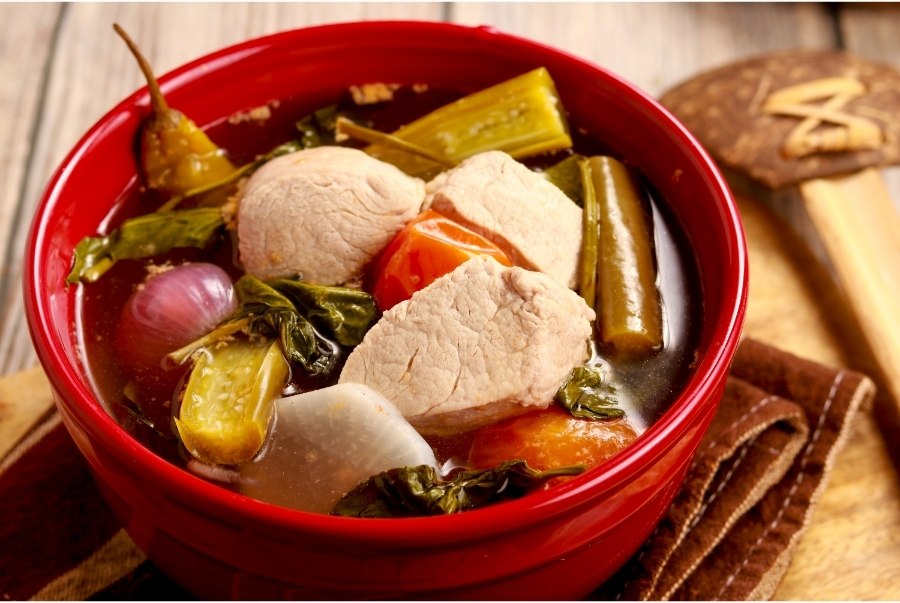
A refreshing combination of sour and savory makes sinigang one of the most popular Filipino dishes. This meaty soup comes in multiple variations, but the acidic broth defines this Filipino comfort food.
Traditionally made with tamarind, other sinigang variations derive their sourness from guava, unripe mangoes, or santol. Pork, beef, chicken, fish, or shrimp is stewed with tomatoes, garlic, onions, and a slew of other vegetables, resulting in a nutritious dish that tantalizes with its tangy taste. Filipino families often duke it out on who can create the sourest recipe!
Adobo
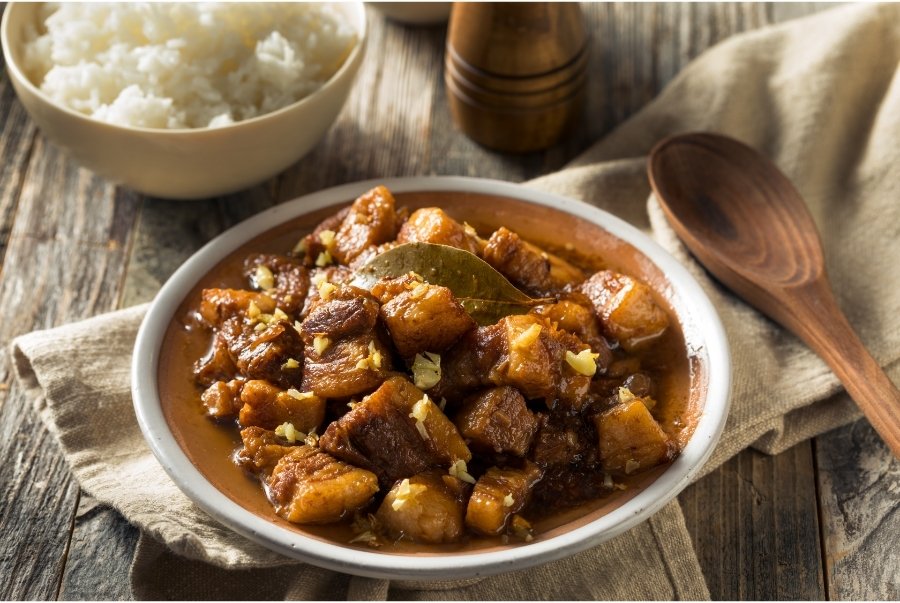
Ah, the ever popular adobo. Often considered the unofficial national dish of the Philippines, this world-renowned cooking process involves marinating meat, seafood, and vegetables in a savory mix of soy sauce, vinegar, bay leaves, garlic, and black peppercorns. Unlike its Spanish variant, adobar, the Philippine adobo utilizes ingredients derived from Southeast Asia.
Some variants of this Filipino delicacy are soupier, allowing you to drizzle the lip-smackingly savory marinade over rice, while others are drier with bolder flavors from browning the meat.
Kare-Kare
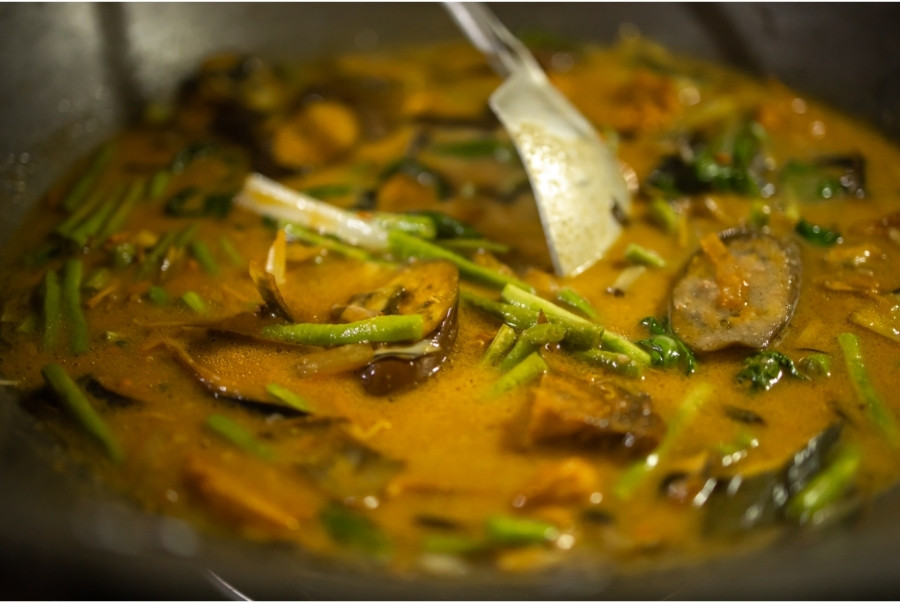
Visit a Filipino town fiesta, birthday, or family gathering, and you’re bound to encounter this Philippines food. The origins of kare-kare can be complicated, but the natives of Pampanga, a province northwest of Manila, seem to have the strongest claim. Today’s kare-kare involves immersing tripe and ox-tail in a peanut butter-infused, achiote-colored sauce. Blanched vegetables are thrown in or served on the side.
Overall, it’s a slightly-sweet, slightly-savory, and delicately flavored dish that often requires the brazen saltiness of shrimp paste, often served as an accompanying condiment, to unleash its true flavors.
Sisig
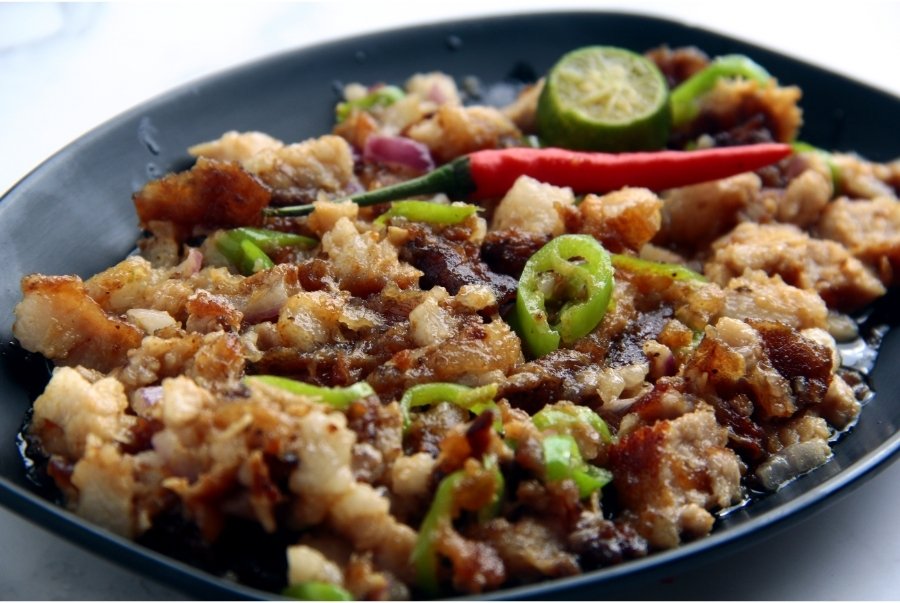
Sisig is to beer as Jekyll is to Hyde – these two are inseparable. Often served as bar chow, this delicious, cartilaginous minced pork dish is as much a textural experience as it is an explosion of flavors.
The dish comes in multiple variations, often replacing pork meat with healthier alternatives like fish, tofu, seafood, or chicken. However, the most delicious is its original iteration: a combination of chopped pig’s face and chicken liver, smothered with diced onions, chilli peppers, and a touch of tangy calamansi juice. Pair it with an ice-cold San Miguel beer, and it’s heaven on your palate.
Lechon
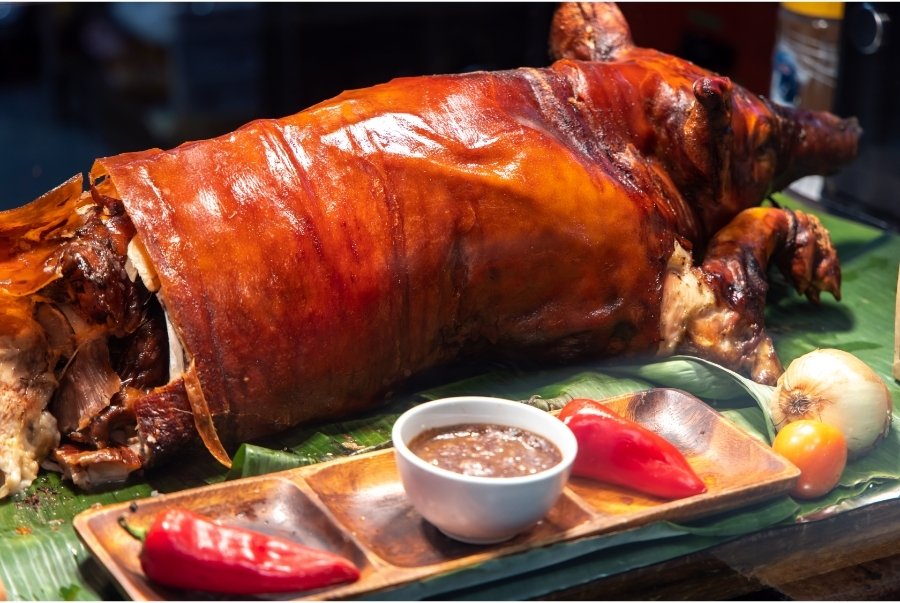
When you see lechon roasting on a pit, it’s safe to assume a party is about to happen. Often the centerpiece of Filipino birthday gatherings, the traditional lechon is made by stuffing an entire suckling pig with garlic, lemongrass, onions, chives, and tamarind. The pig is slowly turned and roasted over a bed of hot coals until the meat is fall-off-the-bone tender and the skin crackles and glistens. The result is a remarkably flavourful pork dish often served with a thick liver sauce.
Balut
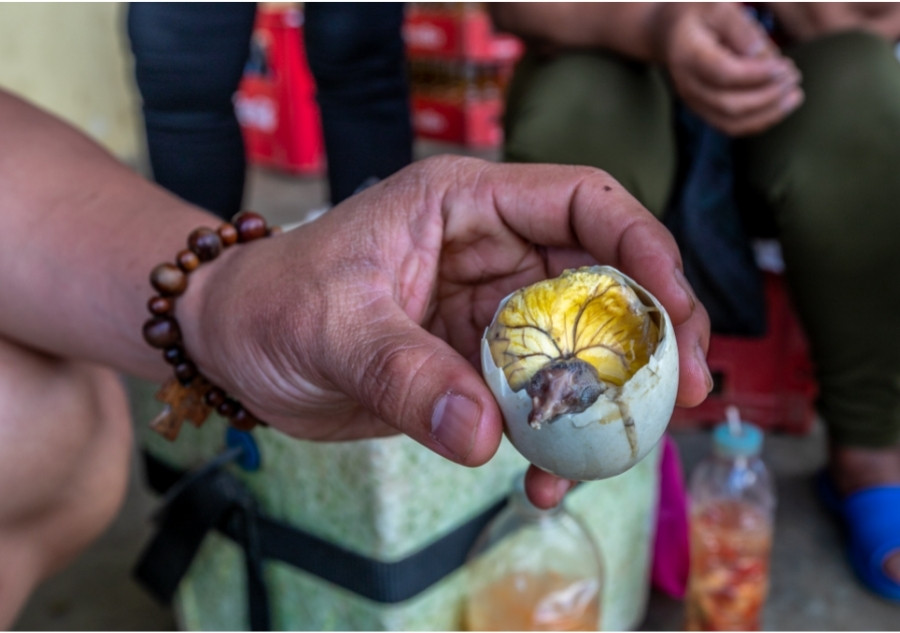
Some locals would say that you can’t be one with the Filipino people until you’ve tried this delicacy of Filipino cuisine. For foreigners visiting the Philippines, eating balut, or fertilized duck egg, is an unspoken rite of passage.
Balut is made by incubating a duck egg for 14-21 days and then steaming it. It’s commonly sold by street vendors and eaten right out of its shell, savouring the egg juices before wolfing down the contents. It’s often served with a dash of salt and vinegar. Want to win your Filipino friends’ hearts? Eat one without reservations and with a straight face.
Dinuguan
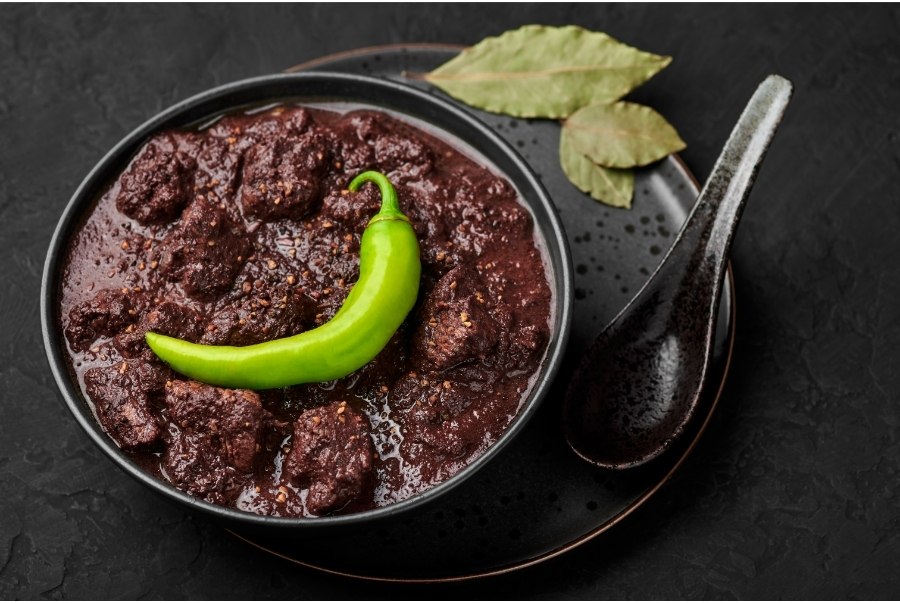
Exotic food tastes good until you know what they’re made of, and dinuguan is a testament to this. Not one for the light-hearted, traditional dinuguan is a tangy and savory stew made from pork meat and innards, thrown in a dark and thick gravy of garlic, vinegar, chilli, and – are you ready for this? Fresh pig’s blood. The result is an intensely flavourful viand that’s better when poured over steaming hot rice.
Lumpia
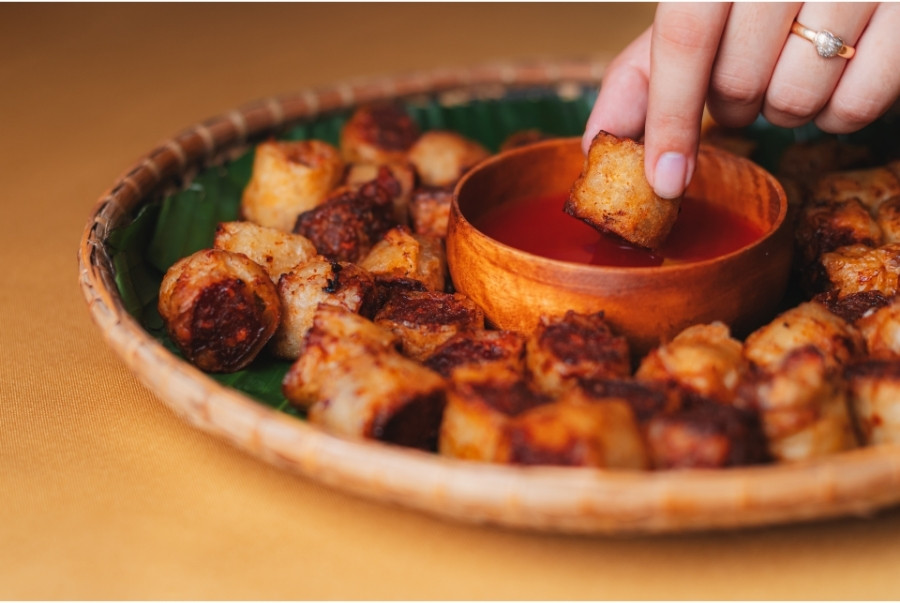
Lumpia is the spring roll of Philippines food, and it’s famous for being the first dish guests horde at a party. Crispy on the outside and moist and meaty on the inside, the traditional Filipino lumpia is made by wrapping a combination of ingredients – typically ground pork, cabbage, gingers, carrots, onions, soy sauce, and garlic – in a spring roll wrapper and then deep-frying until golden brown.
Palabok
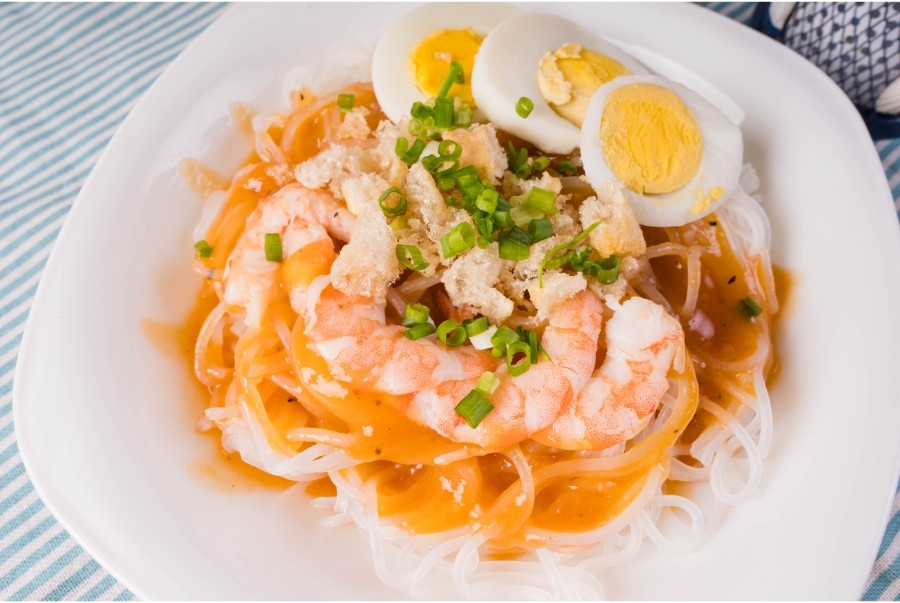
Locals say those who eat palabok will live longer lives. It might be superstition, but it’s a welcome benefit, especially if it means living long enough to eat more of it! Another party mainstay of Filipino cuisine, palabok is a rice noodle dish made with a thick shrimp-infused gravy. It’s often topped with an assortment of ingredients, including fried pork rinds, hard-boiled eggs, fish flakes, scallions, and shrimp.
Bulalo
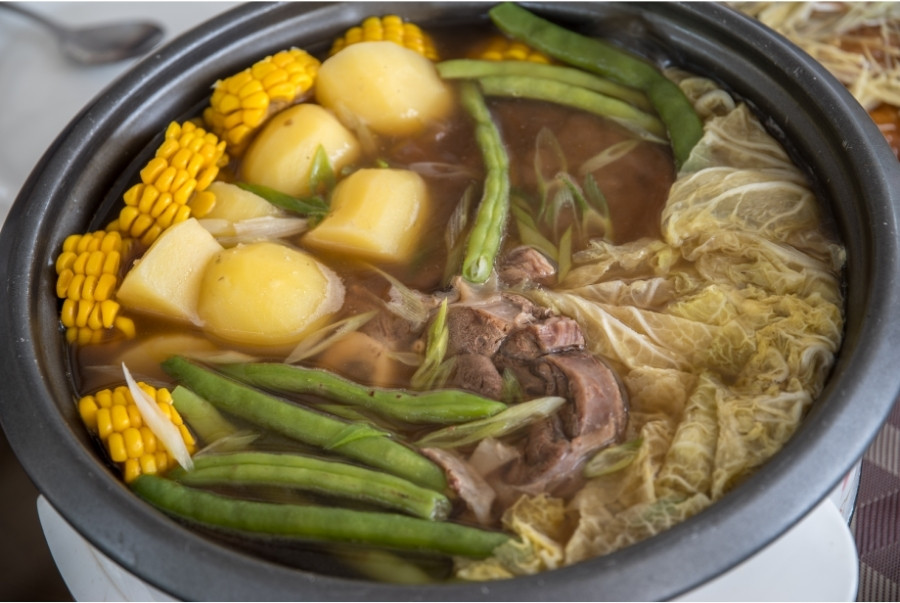
When the weather gets chilly in the highlands, Filipinos love warming up to a hearty bowl of bulalo, a light but flavourful soup made by boiling beef marrow bones and beef shanks for hours until most of the meat essences have melted into the broth.
To taste, chefs get creative with their inclusions. While some purists just add salt and pepper, others go all out with bay leaves, patis, garlic, bok choy, potatoes, green beans, and carrots. The bulalo’s main draw is its much sought-after bone marrow, which is scooped with a spoon, sprinkled with a dash of fish sauce, and eaten with rice.
Header image credits: javgutierrez via Canva


